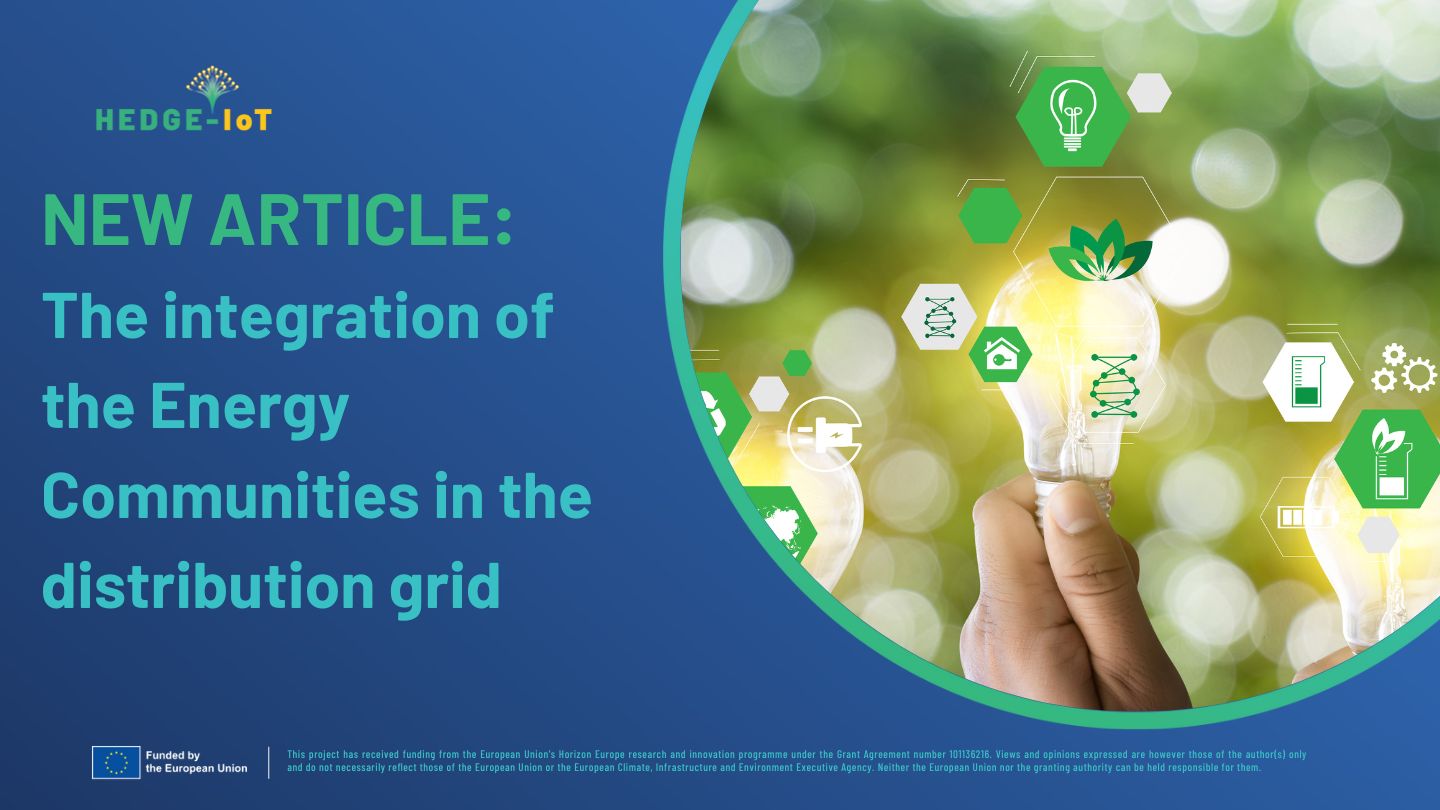
The energy transition fosters the grow of new technologies based on the electrical carrier, as electric vehicles, heat pumps, induction hobs. Moreover, leverage on the electricity cost peaks of the last years, several Member States have strengthened incentives to distributed generation growth.
Energy Communities (ECs) represent a solution able to tackle the two previous aspects, matching renewable productions and consumption in a local area of the distribution network (in Italy is the primary substation perimeter) to increase the local real-time self-consumption.
The Hedge IoT Italian demo aims to avoid the grid issues (current limits and voltage violations) thanks to the energy flows generated by ECs and to exploit the flexibility provided by the ECs to solve the local congestions. To achieve these scopes the experimentation makes in place two use cases:
- The DSO, through a market approach, acquires flexibility provided by Energy Communities to solve a local congestion. The use case tests the short-term sessions of the local flexibility market implementing the phases of procurement, activation and settlement;
- EC’s managers optimize the energy flows according to the dynamic grid limits sent by DSO through standardized IoT appliances. The use case aims to face cases where EC members connected to a specific point of the grid (secondary substations, low voltage feeders or street cabinets, …) where the simultaneity of the loads or the productions could overload the grid components. Hence, the DSO runs the grid simulation and detects the grid constraints, then the limits are shared in a fully automatic way and in real time with the EC management systems, that optimizes the dispatching in compliance with DSO thresholds.
To test the use cases, the Demo partners are developing innovative devices, platforms and processes to increase the automation degree of the EC / grid interface, of the DSO grid controllability and the EC internal energy optimization.
As electricity demand grows and RES become more decentralized, Distribution System Operators (DSOs) face increasing challenges in managing grid congestions. Energy Communities —groups of local consumers and producers sharing energy resources—offer a promising solution. By promoting local energy generation, storage, and flexible consumption, ECs can provide at the same time global balancing and demand response at local level: reducing peak loads, minimizing grid issues, enhancing overall network efficiency. This article will explore how energy communities can support DSOs in congestion management while ensuring a more resilient and decentralized energy system.
To realize this vision, we’re opting for a twofold approach: an intelligent decentralized edge systems collecting data about grid status coupled with a digital representation of the grid running nowcasting and forecasting to predict congestions and engage flexible resources to solve them.
Building on our experience from RomeFlex, we’ve defined four main pillars to realize the pilot on:
- Power Grid User Interface (PGUI): a device installed at a flexibility-enabled customer’s premises, enables near real time data collection enabling fine-grained control of behind the meter devices;
- IoT-enabled RTU: a new generation of substation RTU coupling mission-critical SCADA based grid operations with real time data collection based on modern IoT paradigms. Data from IEDs managing MV and LV grids are aggregated and validated on-edge and then made available to upstream data processing systems;
- AI-Powered Forecast Model for Grid Management: A predictive model leveraging artificial intelligence and machine learning to accurately forecast electricity loads and renewable energy productions. By analyzing historical data, weather patterns, and real-time grid conditions, the model aims to provide a forecasted behavior for every data-producing element along the grid;
- Grid’s Digital Twin: A virtual model that replicates the real-time state of the grid, enabling advanced monitoring, simulation, and optimization, while providing an up-to-date view thanks to real time interaction with SCADA systems. Furthermore, by integrating a state estimation algorithm, the model is able to interpolate data from data silent grid nodes, representing their state with better accuracy.
Our EC engagement mechanism tackles grid congestion by empowering local balancing of energy flows. By integrating decentralized energy generation, storage, and flexible consumption at the community level, we reduce the burden on central distribution networks during peak loads. The combination of near real-time data collection via PGUI devices and IoT-enabled RTUs with sophisticated forecasting through our AI-Powered Forecast Model offers precise insights into grid behavior. Meanwhile, our Grid’s Digital Twin provides an accurate, dynamic view of the network—even interpolating data from silent nodes—allowing DSOs to anticipate and mitigate congestion effectively. This comprehensive approach ensures that energy communities not only optimize local resource usage but also enhance overall grid resilience and efficiency.
The insights gained from the Hedge IoT demonstration and previous projects like RomeFlex confirm that the combination of advanced digitalization, intelligent forecasting, and automatic decentralized resource management is essential to address future DSO challenges. Energy Communities are not just local balancing agents but key players in enhancing grid resilience and efficiency.
By integrating cutting-edge technologies — such as digital twins, AI-powered forecasting models, and edge computing devices — DSOs can proactively anticipate issues, manage flexibility in real time, and enable a more sustainable, participatory, and decentralized energy system.
This integrated approach represents a crucial step towards a smarter power grid enabling energy transition and empowering prosumers to actively contribute to the energy ecosystem of the future.
References:
- https://www.platone-h2020.eu/
- https://www.areti.it/conoscere-areti/innovazione/progetto-romeflex